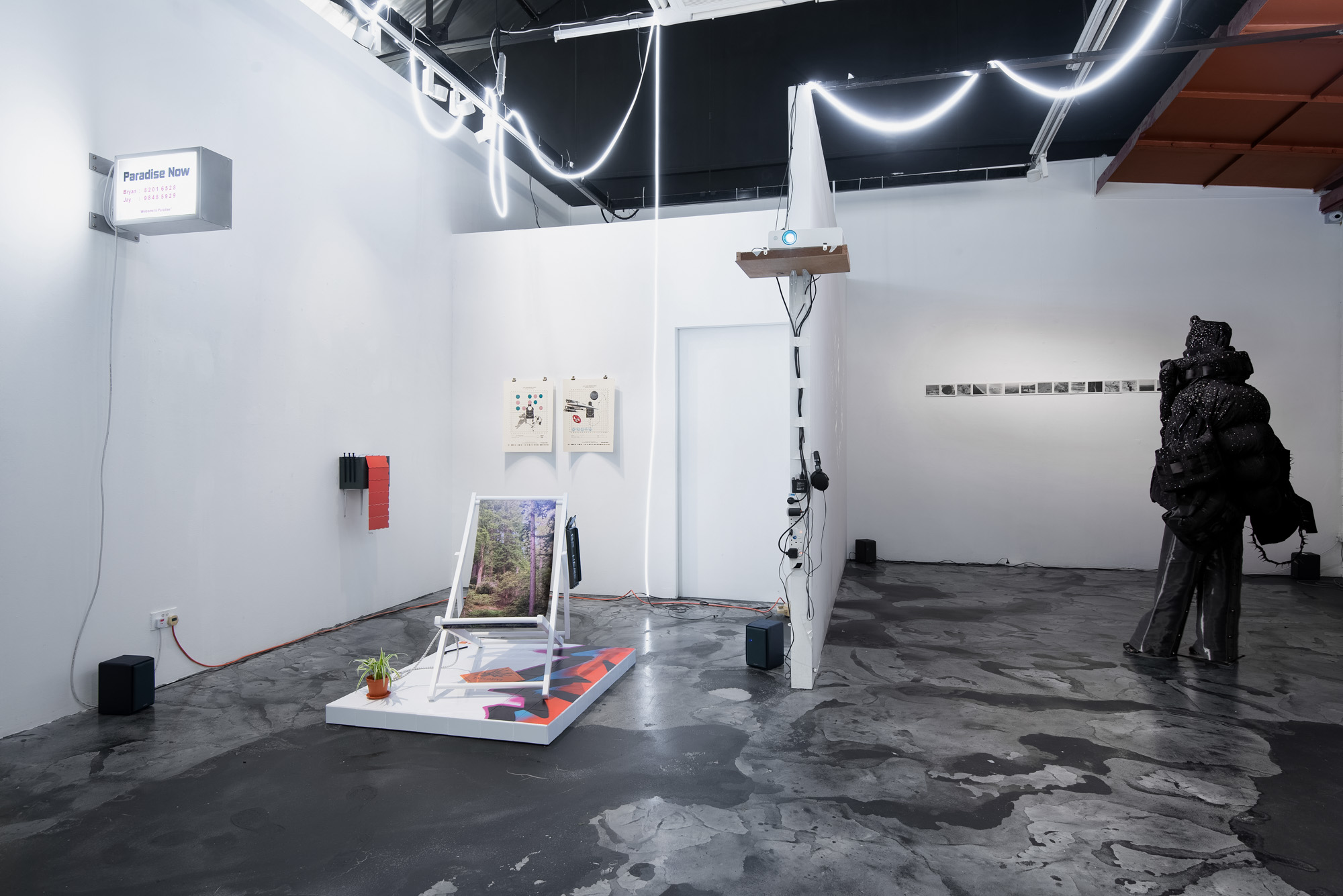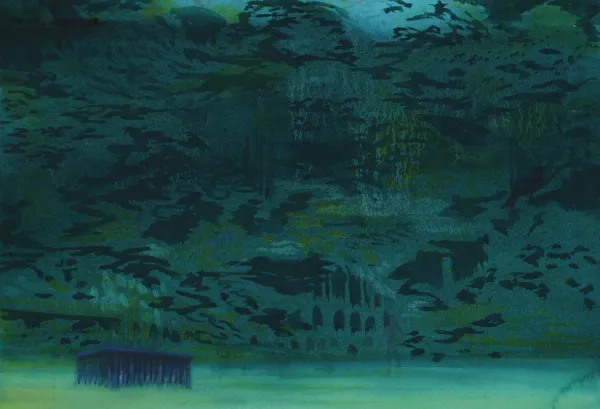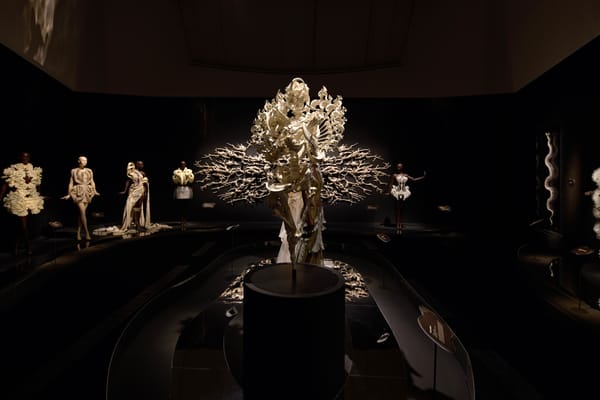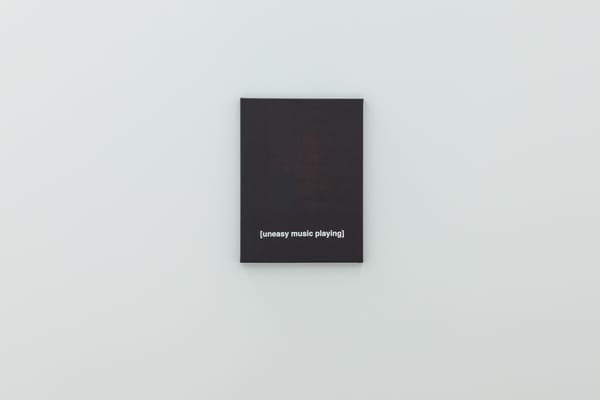Shows
“Only Losers Left Alive (Love Songs for the End of the World)”


“Only Losers Left Alive (Love Songs for the End of the World)” was most appropriately timed and sited. The two-part show, conceptualized by independent curator Louis Ho, took place at the far end of Gillman Barracks, a location now rather forlorn with the closing of the NTU Centre of Contemporary Art earlier this year. Although the exhibition was interrupted by restrictions on gallery attendance as Singapore entered its third lockdown phase in July, these seemingly bleak circumstances became the perfect backdrop for Ho’s dreamy vision of a post-apocalyptic dystopia. The title riffs off Jim Jarmusch’s 2013 classic Only Lovers Left Alive, and filmic references abound in this quirky, clever exhibition.
Featuring works by young Singapore-based artists, the exhibition evoked a richly sensorial world populated by the “supernumerary fragments of a universe ravaged by unknown forces,” with each chapter taking on a distinct character and filmic ambience. While Part 1 focused on human bodies and technological objects, rendered in an almost monochrome palette, Part 2 foregrounded bright and pastel colors, with visual motifs that played on flora, fauna, and alien shapes. The two exhibitions, held in sequence at Yeo Workshop, were sonically connected by Mark Chua and Lam Li Shuen’s trippy soundtrack Never Seen the Roof (2021), available for sale as recordings made on the almost obsolete cassette tape. Another constant was Victoria Hertel’s Short Circuit (2021), a site-specific intervention on the gallery floor and ceiling. Sumi ink and gum Arabic had been poured over the entire gallery floor, rendering previously existing marks and indentations into an otherworldly, almost lunar landscape. Overhead, Hertel had looped flashing light cables. These, together with the black electric wires from other works that had been deliberately left to snake across the floor, invoked the feel of Terry Gilliam’s satirical 1985 science-fiction film Brazil.
Part 1 opened with poetic odes to time, as laid out in Sarah Isabelle Tan’s delicate black-and-white photographs of bleak natural landscapes, The Timeline: To a World Without Time (2019–21), and XUE’s Butoh-influenced video Eclipse (2021), in which the artist, lying in embryonic state, moves in super slow motion. Hamkah Latib’s The Mega Remix (2020) and Chok Si Xuan’s deliquesce (washaway coat) (2019) brought fashion insights into Ho’s curatorial mix. Latib’s magnificently clad humanoid, in a crystal-embellished black ensemble, is a luxe tribute to The Hunger Games franchise and Mad Max: Fury Road (2015)’s sartorial aesthetics. Set against the inky glamour of Latib’s work is Chok’s hanging clear garment resembling a simple raincoat. In the accompanying video performance, the water-soluble coat completely dissolves under a shower, leaving Chok in her underwear. Meanwhile, Brandon Tay’s animated video Death Spiral (2021) envisions a future Armageddon that is a mash-up of pop cultural citations and textual references—think Star Trek to Gundam to Neon Genesis Evangelion imploding in a visual overload on the wall.
That was not to say all was gloom and doom at the end of the world. On the contrary, artist duo Paradise Now’s assemblage of three works, installed as a reconstituted campsite, well captured the overbright sunshine notes of a last-hope utopia. The aesthetics of the Californian squatter community Slab City, the Arte Povera movement, and visual inflections from American Pop Art are combined into a wryly soulful work. Welcome to Paradise (2021) is a lightbox in the style of old Chinese pawn shop signage, a once ubiquitous feature of Singapore’s urbanscape. The artists listed their actual phone numbers on the signage, leading to unexpected real-life calls from curious visitors. While initially surprised, the artists came to see these calls as an opportunity to talk about the work. On the back of the lightbox, lyrics to Skeeter Davis’s 1962 song “The End of the World” are printed as a Windows error message on the blue screen of death. Philosophical Easter eggs are hidden in plain sight, for example the Ram Dass quote “Be Here Now” inscribed on a metal tray casually hung on the side of a deck chair. Even so, disquieting notes ripple beneath this seemingly sanguine mise-en-scene. Light Year Projection Sheet (2021) comprises aniconic self-portraits in the form of zeroing target sheets, which are used to calibrate firing arms before hunting.
If Part 1 brought existential and apocalyptic anxieties bubbling to the surface, Part 2 offered an experience that might be described as Ho’s curatorial rendition of happy pills washed down with a frothy pink cocktail while chilling in the glow of lava lamps. Juria Toramae’s video Uncanny Lagoon (2021) cast a glowing digital pool on the floor. The work explores the rise of new life forms, depicted as colorfully ethereal phantasms in states of endless metamorphosis. Using artificial intelligence, Toramae created animated images of fantastical forms based on her documentation of marine species found in Southeast Asia’s waters. The psychedelia is echoed in Sarah Isabelle Tan’s luminous print series, The Timeline: like the delayed rays of a star (2021). Tan began with photograms that capture flowers in mid-wilt before printing on archival paper. The enlarged floral prints were then digitally scanned and compiled in a single channel video, made in collaboration with Jeremiah Tang.
Per Ho’s curatorial interests in LGBTQ+ issues, Part 2 featured works by a number of queer-identifying artists, with a wide range of aesthetic sensibilities. For Kissing Doesn’t Kill, Strange Natures (2021), Georgette Goh draped the entrance with a plethora of preserved, artificial, and foraged botanical specimens meant as a statement on diversity. According to Mazuri Mazlan, his bright red installation of bulbous, misshapen fragments, Remember us – if at all – not as lost (2021), is both a ruined landscape and conceptual self-portrait. Samuel Xun gives expression to local queer culture with distinctive visual language that turned out brilliantly colourful semi-kitschy soft sculptures with impudent titles like Cunt Be Bothered (2021). In contrast, Geraldine Lim’s I meet her at a place we always go to (a drawing journal) (2020–21) are introspective musings on loneliness and longing, rendered in naïve style with color pencil on paper. The artist covered an entire wall with small intimate drawings of anthropomorphic, feminine figures caught in sometimes tender, sometimes painful, human moments.
Taken together, “Only Losers Left Alive” signaled the decline of human presence and agency against the rise of a savagely beautiful post-human world. For Ho, who left a more traditional institution to explore new curatorial adventures, the project is “an experiment” in exhibition-making, to curate “by mood rather than intellection.” As befitting the exhibition’s end-of-the-world theme, a storm-induced blackout literally closed out the show on the very last day, leaving the gallery in a complete and natural darkness.
“Only Losers Left Alive (Love Songs for the End of the World)” was on view at Yeo Workshop, Singapore, July 10–31 (Part 1) and August 7–29, 2021 (Part 2).







